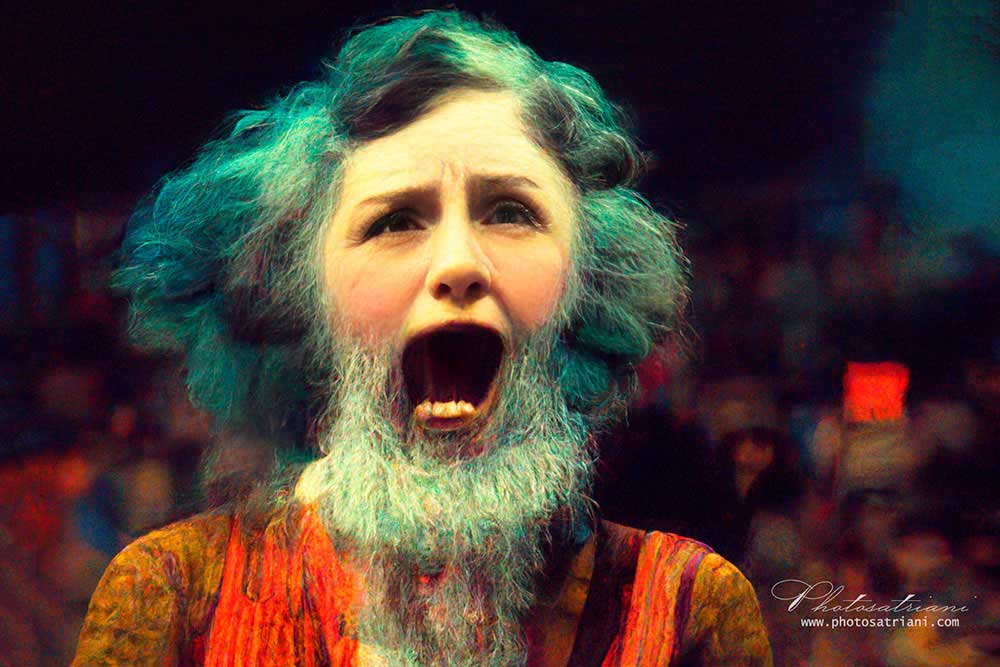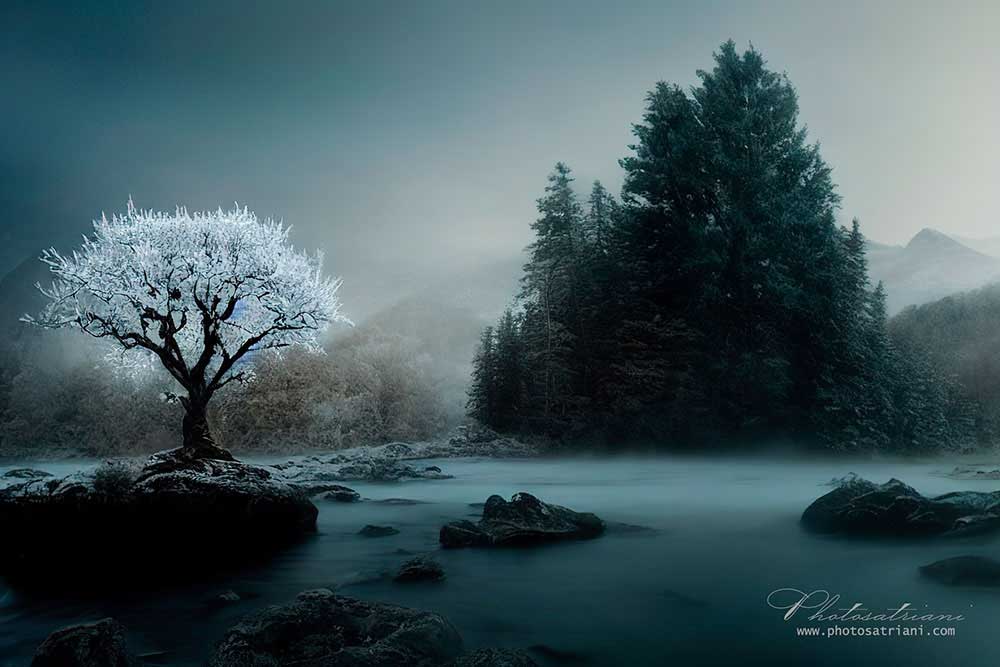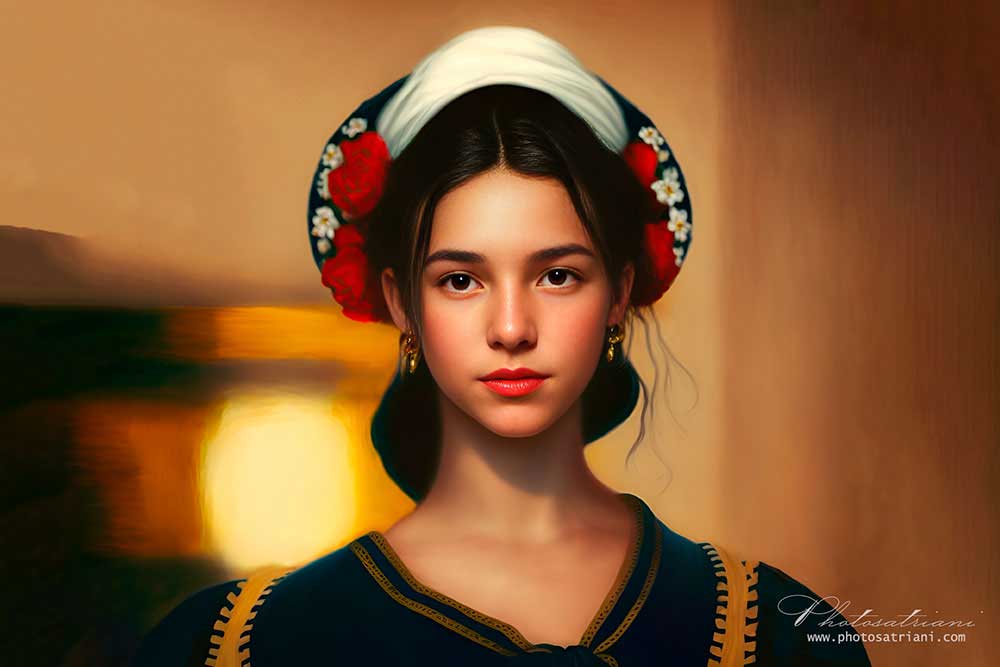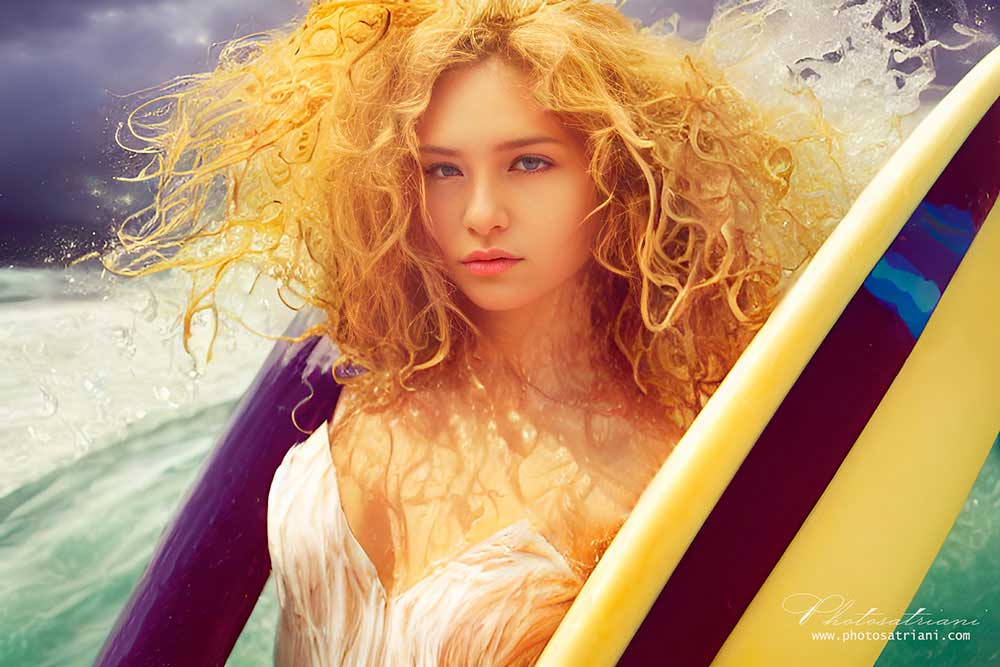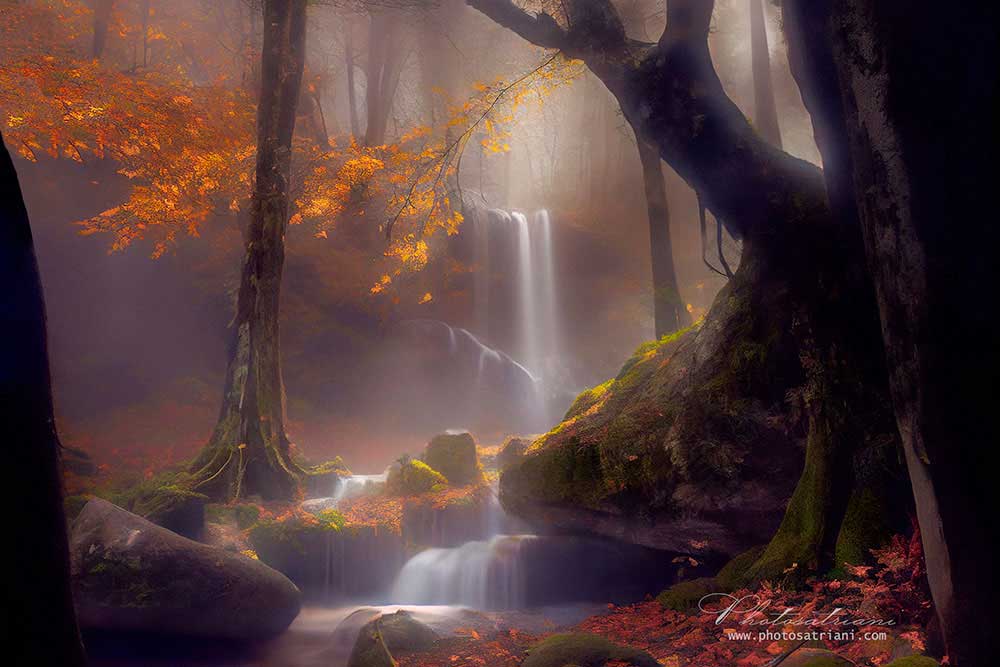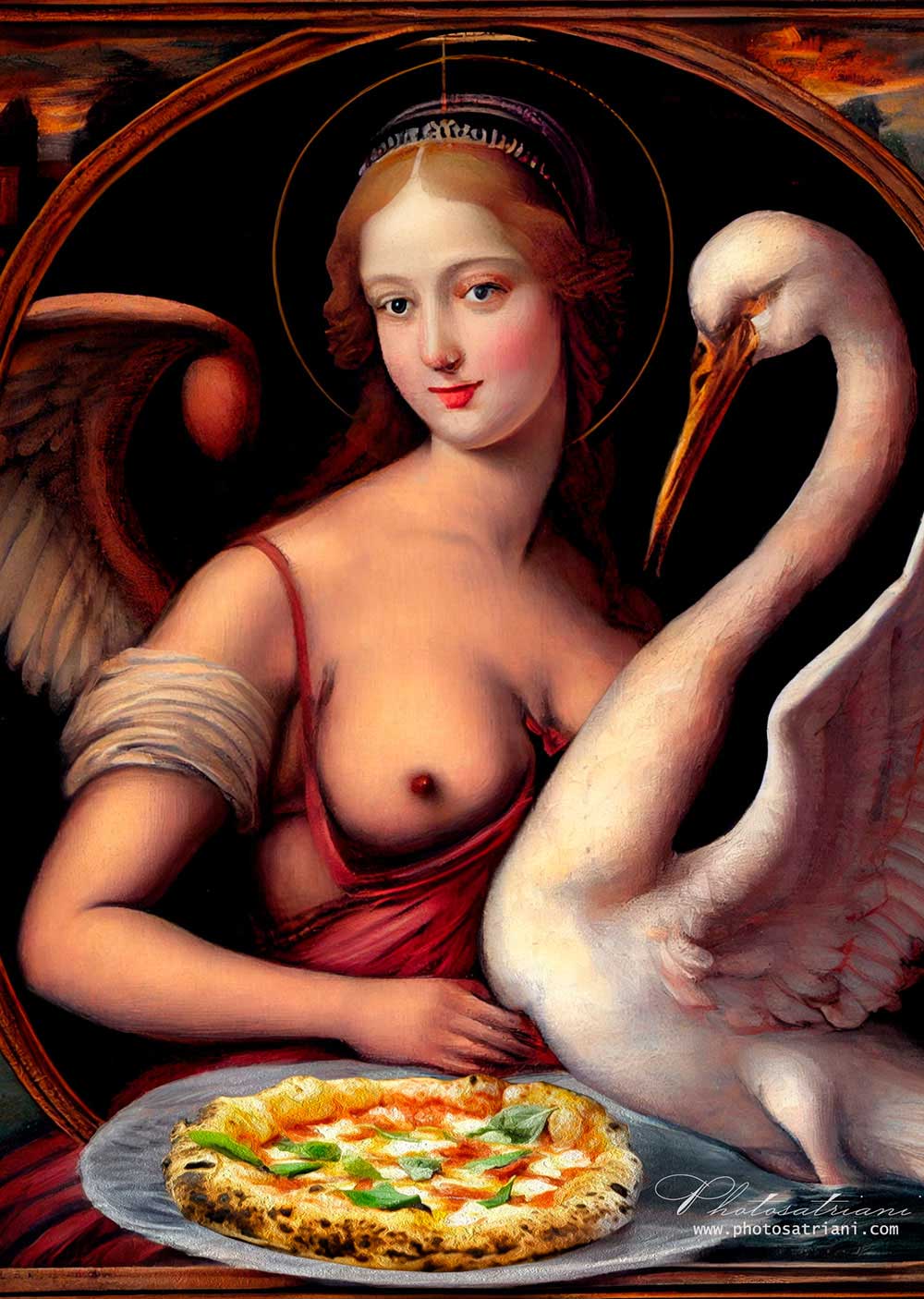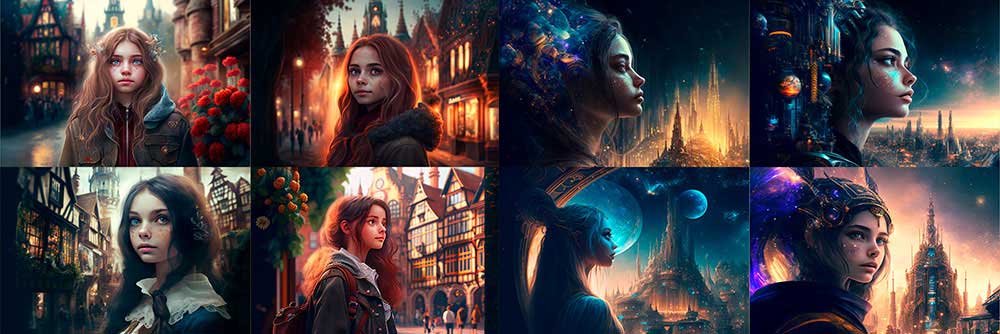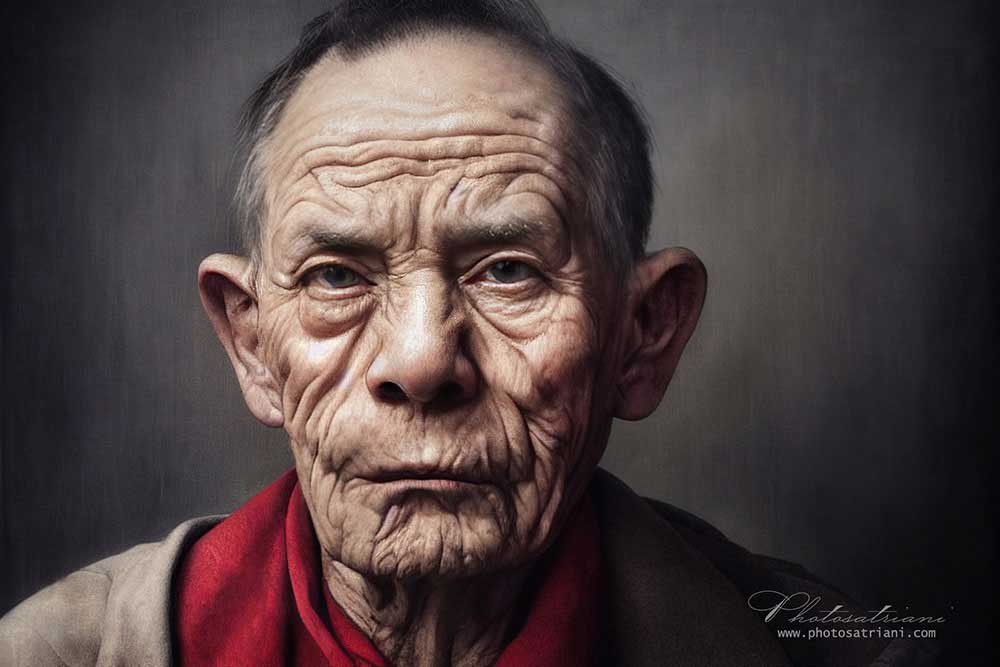We are experiencing a turning point; indeed, I would say a revolution in the artistic disciplines, especially those relating to visual art; it is the beginning of a new Era in which the current paradigms will no longer be valid, in which reality will be questioned or modified through alternative realities.
To date, no one can yet imagine all the repercussions that this visual revolution could have in different sectors of the Art and beyond.
I call the result of this revolution “AImagine” to stress that this new way of making Art is still strongly related to the imagination; at the same time, the neologism of which I proudly hold the genesis, refers to the concept of “Images Generated with Artificial Intelligence (AI)”. I would like to stress very much the fact that I have not expressly used “by AI” but “with AI”, to underline the intentionality with which these images must be created, using the Artificial Intelligence as a tool and not simply letting the Artificial Intelligence generate the image for us
Artificial Intelligence
The entry of Artificial Intelligence into the creative process is undoubtedly an unstoppable cosmic revolution with a scope yet to be discovered. In fact, it will not only transform/enrich the creative process, but will change the rules of the “economic game” around Art, illustration, video, graphic design, advertising, etc.; it will semantically and ontologically transform the process of fruition of Art; the philosophy relating to the visual arts will change because it will question the existence of reality as we understand it now, simply relegating it to one of the equally possible realities.
It is not a monster or a weapon of mass destruction; it is simply the result of very human phenomena. On the one hand, the research that has been carried out for several decades in information technology laboratories, to create a computational intelligence capable of making decisions based on the experience; on the other hand, the availability of several hundreds of millions of images stored “in the cybernetic cloud” (just think for a second on the massive and obsessive use we make of “socials” to share, assume, testify, stand out through images). These images, previously and automatically labeled or labeled through a very tedious and potentially very risky manual work, train the AI engines who learn by relating images to labels.
The combination of these two “phenomena” has allowed ingenious computer engineers (at the moment very skilled to position themselves as references in this lucrative market that is emerging) to create and “train” Artificial Intelligence Engines (AIE) with hundreds of millions of images available in the cloud, to generate other images, starting from a sentence written in natural language (in industry jargon: “Prompt”).
Perhaps the most interesting aspects of these AIEs are:
- Each image that is generated is unique because the probability that the same image is generated starting from the same “prompt” is so infinitely small, that it is mathematically equal to zero. This is due to the enormous quantity of images that “feed” the AIEs and to all their possible combinations which are simply infinite and certainly humanly unaccountable
- The images obtained are not copies or plagiarisms of any of the images that make up the starting Universe of the AIE, because these engines do not operate by “cutting and pasting” images but generate an image whose seed is a set of images contained in the universe of reference that comes closest to the content of the “prompt” that is used for.
At the moment I don’t think I’m wrong in saying that there are three of the most used, well-known and powerful AIEs: Midjourney, DALL-E and Stable Diffusion with already a few million users who generate millions of images on a daily basis which in turn feedback the same engines.
Ethics, Syntax and Envy
Even today there is a debate in certain circles whether retouching images with Photoshop is ethical or not; but whoever has been a photographer for a few decades will still remember the contempt and controversy of those who considered that taking a picture with a digital camera was not photography; of the public humiliations suffered by those who first retouched their photographs with Photoshop. What about the sufficiency with which certain “masters” of graphic design considered their colleagues who, instead of using pencils and paper, used tablets and computers to create their works…and I could go on with many other examples, up to even to Charles Baudelaire who in 1859, referring to the then fresh invention of Niepce y Daguerre, asked himself: “To what extent does photography construct the landscape and to what extent is the notion of landscape in the 19th century artificial? and stated: “with a procedure such as photography, a mechanical reproduction of nature is obtained and not the work of an artist.”
The world seems to change at great speed but at same time, frequently it returns to propose the same doubts, especially in the most conservative territories in which those who profit from the present will always try to preserve it from attempts to break “the status quo” to continue to perpetuate it indefinitely for its own sake. You can therefore well imagine what ferocious attacks those who are starting to propose AI-mages are undergoing; what ostracism is being used in many areas to marginalize this new form of making art as a “geek phenomenon of four computer freaks who have nothing to do with art”. Catastrophic and absurd phrases such as: “artificial intelligence will kill artists”; “artificial intelligence has won, humans have lost”; “it is the triumph of machine learning against human learning”; “why I have to pay for it if I can generate it myself for free” (well, almost free!)
What should really worry us about this phenomenon is something much more serious than these envy-filled statements. It is very worrying how the AIEs can be misused to misinform, to encourage cybercrime, to encourage collective uprisings based on false realities. Current AIEs implement filters that try to prevent some misuse of them, but these filters can be maliciously bypassed. That is indeed a serious and real problem that sooner or later will be the object of attention by governments to try to prevent unreal realities from playing against them or, vice versa, to create unreal realities that favor them. What I just said is even more disturbing if we think that the same pattern can be used by people with criminal intent.
K-FACTOR in Art
Going back to the questions closest to how the AI-mages will break the status quo of the Art market and the controversy whether an AI-mage is Art or not, I would like to make a simple consideration. Using an AIE to generate an image is like taking a picture except instead of doing it with a camera, you do it with a prompt; instead of finding the most appropriate framing and light, these same things are provoked by playing with keywords in the prompt; instead of using a digital-mechanical process to obtain the photo, one navigates the Universe of images to find the seed that generates the image that answers the prompt. Now I ask you: are all the photographs you take, Art? are they unique? can they communicate? The answer is obvious…and this same negative answer is obtained if we ask ourselves if all AI-mages are Art. What makes an image unique? What makes it special compared to millions of others? There are many factors but surely in my opinion the most important is to be able to find your own style. Another way to do this is to propose a “project” and not just random snapshots; in this way the images support a concept which should not be limited to images, but which could also be enriched by texts, music, speech, video, installations, etc.
Using an AIE, apparently it is easy to generate an AI-mage with impact, but the reality is not so! Perhaps it was in the first moments in which these engines were made available to the world; perhaps for Jason Allen, a modest North American illustrator who made himself famous by winning the first worldwide competition organized by Midjourney…but already now, for those who have been working with these AIEs for some time, it is easy to recognize “Midjourney/DALL-E/stable Diffusion style of images. In those case, the authors limited themselves to feeding a small sentence (or even just a few scattered words) to the engine. The result obtained can also be very beautiful, but it will be very similar to other hundreds of thousands of images also generated without conscience, without any intentionality.
Those artists who want to differentiate themselves and create Art through these AIEs will also have to “put their soul” here, propose an idea and have a lot of “good know-how”, something by no means trivial even if artificial intelligence is behind it.
Conclusion
To understand my point of view on Art created through AImagine(s), I would like you to reflect on the words “image” and “imagine” so similar but so distant. Going back to their etymology, “image” means “outward appearance of things”, while “imagine” means “representing things in the form of images with the fantasy”; the first focuses on the appearance, the second involves our creativity.
We are in the artificial intelligence age, and it is necessary to understand how this new tool can be used and exploited and not opposed; we have to speed up our mind to understand how to use these creative elements without being enslaved by banality but enriching it with imagination. Artificial Intelligence will not destroy creativity, but on the contrary, it could multiply the ideas by bringing people closer to their imaginative side. In any case, natural intelligence, artificial intelligence, emotional intelligence, logical-mathematical, linguistic, musical, bodily, spatial, interpersonal, naturalistic intelligences… and who knows how many others. It is not important to know how many of these each of us is gifted or can master; the most important thing is knowing how to use at least one with skill, awareness and intentionality!
- Midjourney AIE: https://www.midjourney.com/home/
- Midjourney Community: https://www.facebook.com/groups/395755276049376 this is the Midjourney Community sharing AImagine(s)
- IAGrafías: https://www.instagram.com/_iagrafia.com_/ this site is of my mentor Juan Pablo de Miguel and has the special and very useful characteristic that Juan Pablo publicly shares all the “prompts” he uses to generate his published images. This is very useful to gradually learn the most impacting keywords.
Photosatriani
I am a curious of life with idealistic tendencies and a fighter. I believe that shadows are the necessary contrast to enhance the light. I am a lover of nature, of silence and of the inner beauty. My photographic history is quite silent publicly but very rich personally, studded with some great satisfactions such as: gold and silver winner in MUSE Awards 2023 Special Category; Highly Commended in IGPOTY 2022 Wildflowers Landscapes and Breathing Spaces, published photographer in 1X; honorable mention in Pollux Award 2019; commended in IGPOTY 2019 B&W section; highly commended in IGPOTY 2018 Abstract section; selected in 2014 for Descubrimientos PhotoEspaña and in VIPHOTO. Group exhibitions in: Atlántica Colectivas FotoNoviembre 2015 and 2013; selected for the Popular Participation section GetxoPhoto 2020 and 2015; ”PhotoVernissage (San Petersburgo) 2012; DeARTE 2012 y 2013. A set of my images belongs to the funds of Tecnalia company in Bilbao, to the collection of the "Isla de Tenerife" Photography Center and to the Medicos sin Fronteras collection in Madrid. [Website]



